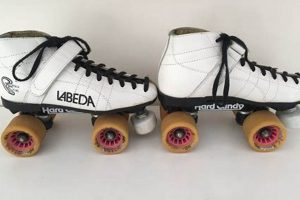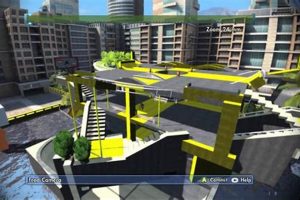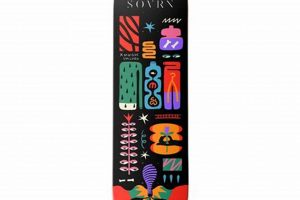A short, unstructured on-ice session, often lasting 15-20 minutes, serves to alleviate physical fatigue and mental strain experienced during prolonged periods of intense activity. This practice aims to maintain freshness and responsiveness within a team or individual. For example, after a particularly grueling practice or travel day, a team might engage in this activity, emphasizing light skating and puck handling rather than demanding drills.
The incorporation of this strategy yields several advantages. It allows athletes to flush lactic acid from muscles, promoting quicker recovery. Furthermore, it offers a mental break, reducing the potential for burnout associated with constant pressure. Historically, its implementation has been credited with sustaining peak performance levels throughout extended seasons and tournaments, contributing to improved player well-being and team cohesion.
The subsequent sections will delve into specific techniques and scheduling considerations for implementing this beneficial activity effectively. Details concerning optimal drill selection, duration, and integration within a comprehensive training regimen will also be explored.
“Relief Skate” Implementation
Effective integration of on-ice recovery periods requires careful consideration of several key factors. These guidelines ensure the session yields optimal benefits while minimizing potential drawbacks.
Tip 1: Session Duration Control: Maintain a strictly limited time frame, typically 15 to 20 minutes. Extended periods can negate the intended recovery benefits and induce further fatigue.
Tip 2: Intensity Modulation: The focus should be on low-intensity activity. Emphasize gliding, light puck handling, and minimal strenuous drills. Avoid high-speed skating or competitive exercises.
Tip 3: Drill Selection Emphasis: Prioritize drills that promote active recovery. Examples include figure-eight skating patterns, passing exercises with minimal pressure, and gentle stretching while on the ice.
Tip 4: Inclusion of Playful Elements: Incorporating lighthearted activities, such as a short game of keep-away with relaxed rules, can enhance the mental refreshment aspect of the session.
Tip 5: Strategic Timing Consideration: Schedule the session immediately following demanding practices or travel days to maximize its impact on fatigue reduction and recovery.
Tip 6: Monitor Athlete Feedback: Observe players for signs of fatigue or discomfort. Adjust the session’s intensity or duration as needed to accommodate individual needs.
Tip 7: Prioritize Skill Refinement: Use the opportunity to work on fine motor skills, such as stickhandling and passing, without the pressure of game-like intensity.
Proper implementation of these strategies ensures that on-ice recovery sessions contribute significantly to athlete well-being, performance optimization, and sustained peak condition throughout the season.
The final section will address specific considerations for tailoring on-ice recovery sessions to different age groups and skill levels, providing a comprehensive guide for coaches and trainers.
1. Active Recovery
Active recovery, an integral component of comprehensive athletic training, significantly enhances recuperation processes following periods of intense exertion. In the context of on-ice sports, this principle manifests as the “relief skate,” a carefully structured low-intensity session designed to mitigate fatigue and promote physiological restoration.
- Enhanced Lactate Clearance
Active recovery facilitates the removal of lactate from muscle tissue more effectively than complete rest. During intense physical activity, lactate accumulates, contributing to muscle fatigue and soreness. Light skating during a relief skate promotes blood flow, accelerating the transport of lactate away from the muscles for metabolic processing.
- Reduced Muscle Stiffness and Soreness
Post-exercise muscle stiffness and soreness are common consequences of strenuous activity. Active recovery, as employed in a relief skate, can help alleviate these symptoms. The gentle movement and low-impact nature of the session encourage blood flow to the affected muscles, reducing inflammation and promoting tissue repair.
- Maintenance of Neuromuscular Activation
Complete cessation of activity can lead to a temporary decrease in neuromuscular activation. A relief skate helps maintain a baseline level of neuromuscular readiness, which can be beneficial for subsequent training sessions or competitions. The controlled movements and skill-focused drills keep neural pathways engaged without placing excessive stress on the body.
- Psychological Benefits
Beyond the physiological advantages, active recovery also offers psychological benefits. A relief skate can provide a mental break from the demands of high-intensity training. The relaxed atmosphere and focus on enjoyable activities can reduce stress and improve overall mood, contributing to enhanced athlete well-being.
These facets of active recovery, embodied by the “relief skate,” collectively contribute to a more effective recovery process, allowing athletes to return to training and competition in a more refreshed and prepared state. The strategic implementation of these sessions within a comprehensive training program is crucial for optimizing performance and minimizing the risk of injury.
2. Mental Refreshment
Mental refreshment, a crucial element in athletic performance, significantly benefits from the integration of short, low-intensity on-ice sessions. These sessions offer a respite from the rigors of intense training and competition, contributing to a refreshed psychological state.
- Reduced Cognitive Fatigue
Prolonged periods of focused training and strategic planning can lead to cognitive fatigue, impacting decision-making and reaction time. Relief skates provide a mental break, allowing athletes to disengage from complex tactical considerations and focus on simpler, more enjoyable activities. This brief disengagement can restore cognitive function, improving performance in subsequent sessions.
- Diminished Performance Anxiety
The pressure to perform can induce anxiety, hindering optimal execution. A relief skate’s relaxed atmosphere and emphasis on fundamental skills create a low-pressure environment. This setting fosters a sense of ease and reduces the psychological burden associated with competitive scenarios, contributing to improved confidence and reduced anxiety during future performances.
- Enhanced Team Cohesion
Incorporating playful elements into relief skates, such as informal games or skill-based challenges, promotes positive interactions and strengthens team bonds. These activities facilitate camaraderie and create a more supportive environment, fostering a sense of unity and shared experience that extends beyond the ice, positively impacting overall team dynamics.
- Improved Motivation and Engagement
Breaking up the monotony of structured training with relief skates injects variety into the training schedule, combatting boredom and maintaining athlete engagement. The focus on enjoyment and skill refinement fosters a positive association with training, increasing motivation and promoting a more proactive approach to skill development and team objectives.
The facets of mental refreshment, facilitated by these targeted on-ice sessions, contribute to a more balanced and sustainable approach to athletic training. By prioritizing psychological well-being alongside physical conditioning, these strategies enhance both individual performance and overall team success.
3. Lactic Acid Reduction
Lactic acid accumulation, a metabolic byproduct of anaerobic glycolysis during intense physical activity, contributes significantly to muscle fatigue. Relief skates, characterized by their low-intensity nature, serve as a strategic intervention to facilitate the clearance of this metabolite, thereby mitigating its detrimental effects on athletic performance.
- Enhanced Blood Flow
Low-intensity exercise, such as that performed during a relief skate, increases blood flow to the working muscles. This elevated circulation enhances the transport of lactic acid from muscle tissues into the bloodstream, where it can be metabolized by other organs, such as the liver. The gentle movement promotes vasodilation, further facilitating this process.
- Increased Oxidative Metabolism
While high-intensity exercise relies heavily on anaerobic metabolism, low-intensity activity encourages a shift towards oxidative metabolism. This metabolic shift enhances the body’s capacity to utilize lactate as a fuel source, converting it into energy rather than allowing it to accumulate. The sustained, moderate effort of a relief skate promotes this transition, aiding in lactate clearance.
- Promotion of Active Recovery
Complete rest following strenuous activity can impede lactic acid removal compared to active recovery. Relief skates, being a form of active recovery, maintain a level of muscular activity that optimizes the clearance process. This contrasts with passive recovery, where reduced blood flow can hinder the efficient transport of metabolic waste products.
- Reduced Perceived Exertion
The psychological benefits of a relief skate can indirectly contribute to lactic acid reduction. By reducing perceived exertion and promoting relaxation, the body’s stress response is minimized. This can lead to a more efficient metabolic state, further supporting the clearance of lactic acid and promoting overall recovery.
The mechanisms by which relief skates facilitate lactic acid reduction collectively contribute to improved recovery, reduced muscle soreness, and enhanced athletic performance. The strategic integration of these low-intensity sessions into training regimens offers a valuable tool for mitigating the negative effects of lactic acid accumulation and optimizing overall athlete well-being.
4. Strategic Timing
Strategic timing represents a crucial factor in maximizing the benefits derived from short, low-intensity on-ice sessions. The deliberate placement of these sessions within a training schedule or competition cycle dictates their effectiveness in promoting recovery and enhancing performance. The following facets elucidate the importance of strategic timing in optimizing the impact of these sessions.
- Post-Exertion Implementation
Administering these sessions immediately following periods of high-intensity training or competition proves most beneficial. This timing capitalizes on the body’s elevated metabolic state, facilitating efficient lactate clearance and promoting muscle recovery. For instance, a 15-minute on-ice recovery period after a grueling practice can mitigate muscle soreness and prepare athletes for subsequent training sessions more effectively than complete rest.
- Travel Day Considerations
Integrating a session upon arrival at a competition venue following travel can mitigate the negative physiological effects of prolonged immobility and disrupted circadian rhythms. Light skating helps restore blood flow, reduce muscle stiffness, and promote mental alertness, counteracting the fatigue associated with travel. This proactive approach enhances athlete readiness for immediate training or competition.
- Periodized Integration
Incorporating these sessions strategically within a periodized training plan allows for a cyclical management of fatigue and recovery. By scheduling them during periods of increased training load, coaches can proactively address potential overtraining symptoms and optimize athlete adaptation. This approach ensures that athletes remain fresh and responsive throughout the training cycle.
- Pre-Competition Activation (Limited Application)
While primarily focused on recovery, a brief, very low-intensity session may be strategically employed to promote neuromuscular activation prior to competition. However, caution is advised; the session must be meticulously designed to avoid inducing fatigue. The goal is to prime the nervous system and enhance coordination without compromising energy reserves.
These facets of strategic timing demonstrate the critical role of deliberate planning in optimizing the impact of on-ice recovery periods. By considering the athlete’s training load, travel schedule, and competition demands, coaches can effectively leverage these sessions to promote recovery, mitigate fatigue, and enhance overall performance.
5. Low Intensity
The effectiveness of an on-ice recovery session hinges critically on maintaining a low-intensity level. The very purpose of a “relief skate” is defeated by elevated exertion. The cause-and-effect relationship is direct: higher intensity induces further fatigue, while controlled low intensity facilitates active recovery and lactic acid clearance. The “Low Intensity” element is not merely a suggestion, but a fundamental component. For example, replacing sprint drills with gentle gliding or puck-handling exercises fundamentally alters the physiological impact, shifting from stress to recovery. Ignoring this principle transforms the session into another training period, negating its intended benefits and potentially hindering subsequent performance.
Real-world examples demonstrate this significance. A team implementing high-speed skating or competitive drills during their recovery period would likely observe increased muscle soreness and prolonged fatigue among its players. Conversely, a team focusing on slow-paced drills, promoting blood flow and active muscle relaxation, would benefit from faster recovery times and enhanced mental refreshment. This distinction highlights the practical application: coaches must consciously limit activity and encourage relaxed movements to facilitate the physiological processes central to recovery. The session should prioritize technical skill refinement at a reduced pace, allowing athletes to maintain their feel for the ice and puck without incurring further physical strain.
In summary, the low-intensity aspect is not merely a characteristic of on-ice recovery periods but the defining feature that dictates its success. Ignoring this principle undermines the very purpose of the session. Challenges arise from athlete inclination to increase pace or coaches unintentionally introducing higher intensity drills; however, a clear understanding of the intended benefits and consistent monitoring of the session’s activity level are essential to ensure its effectiveness. Understanding this relationship links to the broader theme of strategic training and optimizing athlete well-being through carefully planned recovery protocols.
Frequently Asked Questions About Relief Skate
This section addresses common queries regarding on-ice recovery sessions, commonly known as “relief skate,” providing clarity on their purpose, implementation, and benefits.
Question 1: What precisely constitutes a relief skate?
A relief skate is a short, low-intensity on-ice session, typically lasting 15-20 minutes, designed to promote active recovery and mental refreshment following periods of strenuous training or competition.
Question 2: How does a relief skate differ from a regular practice session?
Unlike regular practices that focus on skill development and tactical drills, a relief skate emphasizes low-intensity movements, such as gliding and light puck handling, with the primary goal of reducing fatigue and promoting blood flow to the muscles.
Question 3: What are the key benefits associated with implementing relief skate sessions?
Benefits include enhanced lactate clearance, reduced muscle soreness, improved mental focus, increased team cohesion, and a decreased risk of overtraining.
Question 4: When is the optimal time to incorporate a relief skate into a training schedule?
The most effective timing is immediately after demanding practices, following travel days, or during periods of increased training load within a periodized plan.
Question 5: Are there any risks associated with relief skates?
Potential risks are minimal, provided the session remains strictly low-intensity. Introducing high-speed drills or competitive elements can negate the benefits and induce further fatigue.
Question 6: How can coaches effectively monitor the intensity of a relief skate?
Coaches should actively monitor players for signs of fatigue, encourage relaxed movements, and prioritize drills that promote active recovery rather than strenuous exertion.
In summary, relief skate sessions represent a valuable tool for promoting athlete well-being and optimizing performance, provided they are implemented strategically and with a clear understanding of their intended benefits.
The following section will explore specific drill examples and session planning strategies to further enhance the effectiveness of on-ice recovery.
Conclusion
This exploration has delineated the nature, benefits, and strategic implementation of the on-ice activity known as “relief skate.” The analysis encompassed physiological mechanisms, such as lactic acid reduction and active recovery promotion, alongside psychological advantages including mental refreshment and enhanced team cohesion. Central to the efficacy of this practice is adherence to low-intensity parameters and strategic timing within a comprehensive training program.
The incorporation of “relief skate” sessions represents a proactive investment in athlete well-being and performance optimization. Its value extends beyond immediate physical recovery, fostering long-term sustainability within demanding athletic endeavors. Further research and refined application hold the potential to unlock even greater benefits, solidifying its position as a crucial component of modern sports training protocols. Coaches and trainers should consider this strategy to maximize athletic performance.







